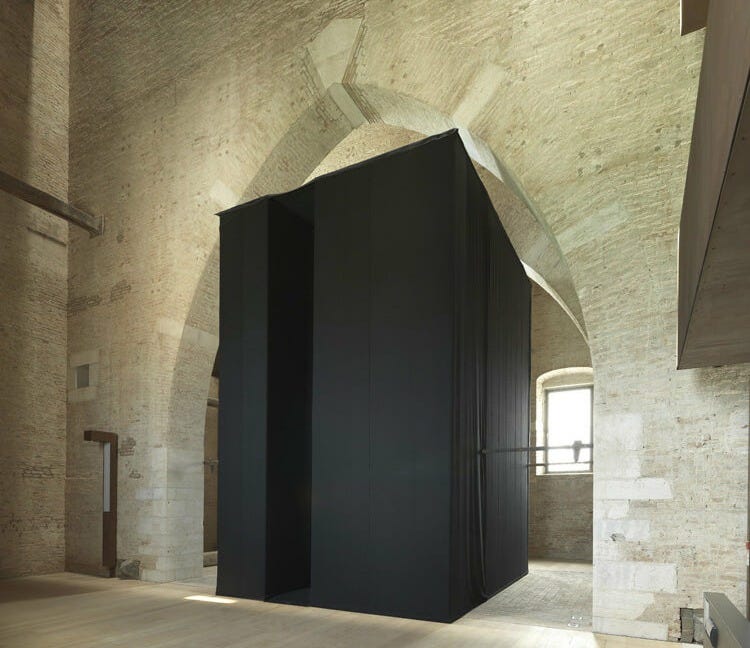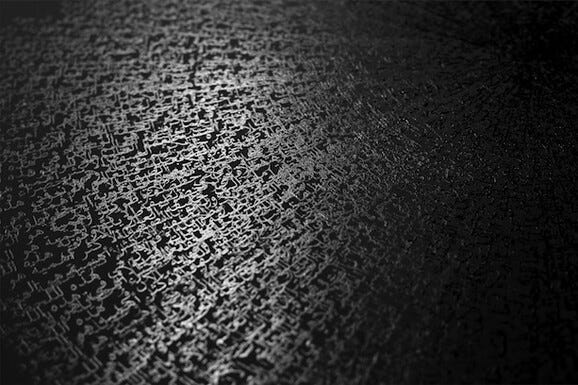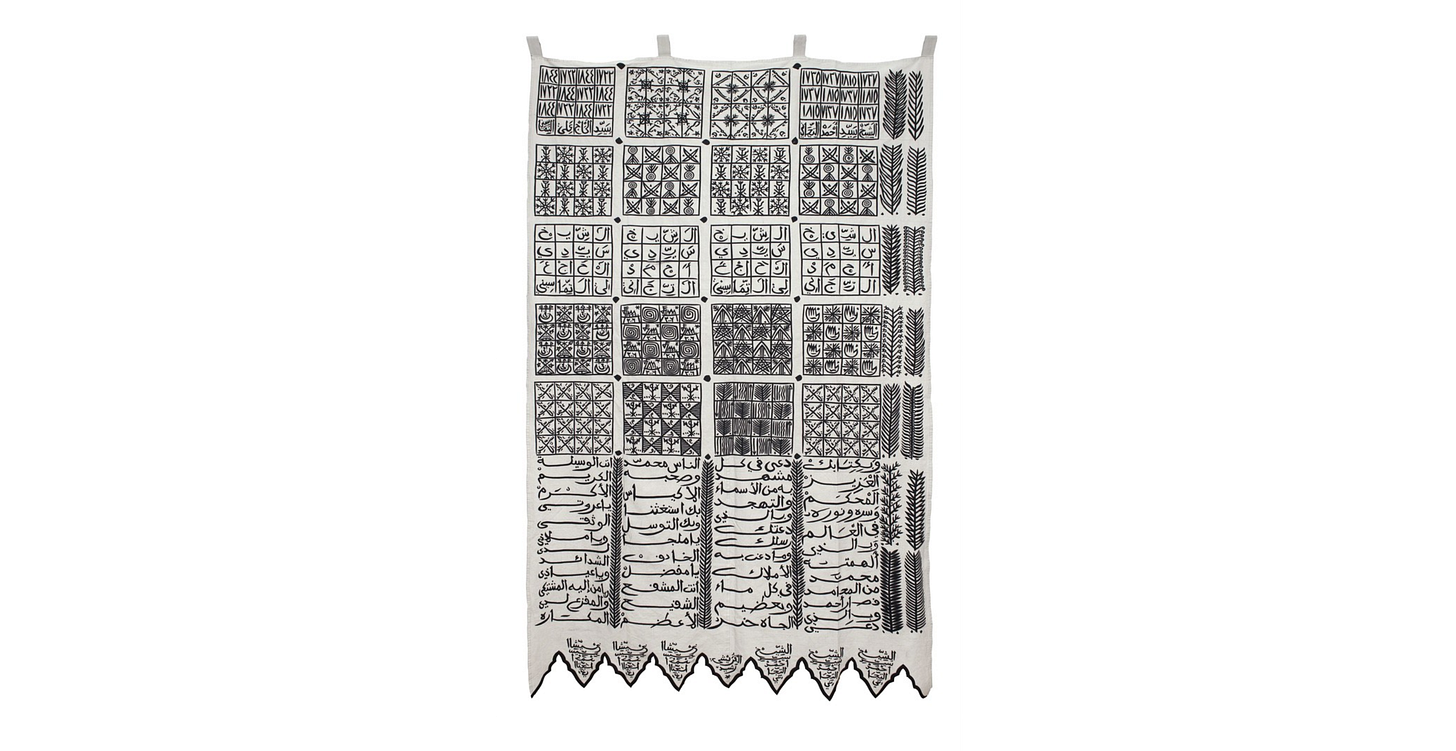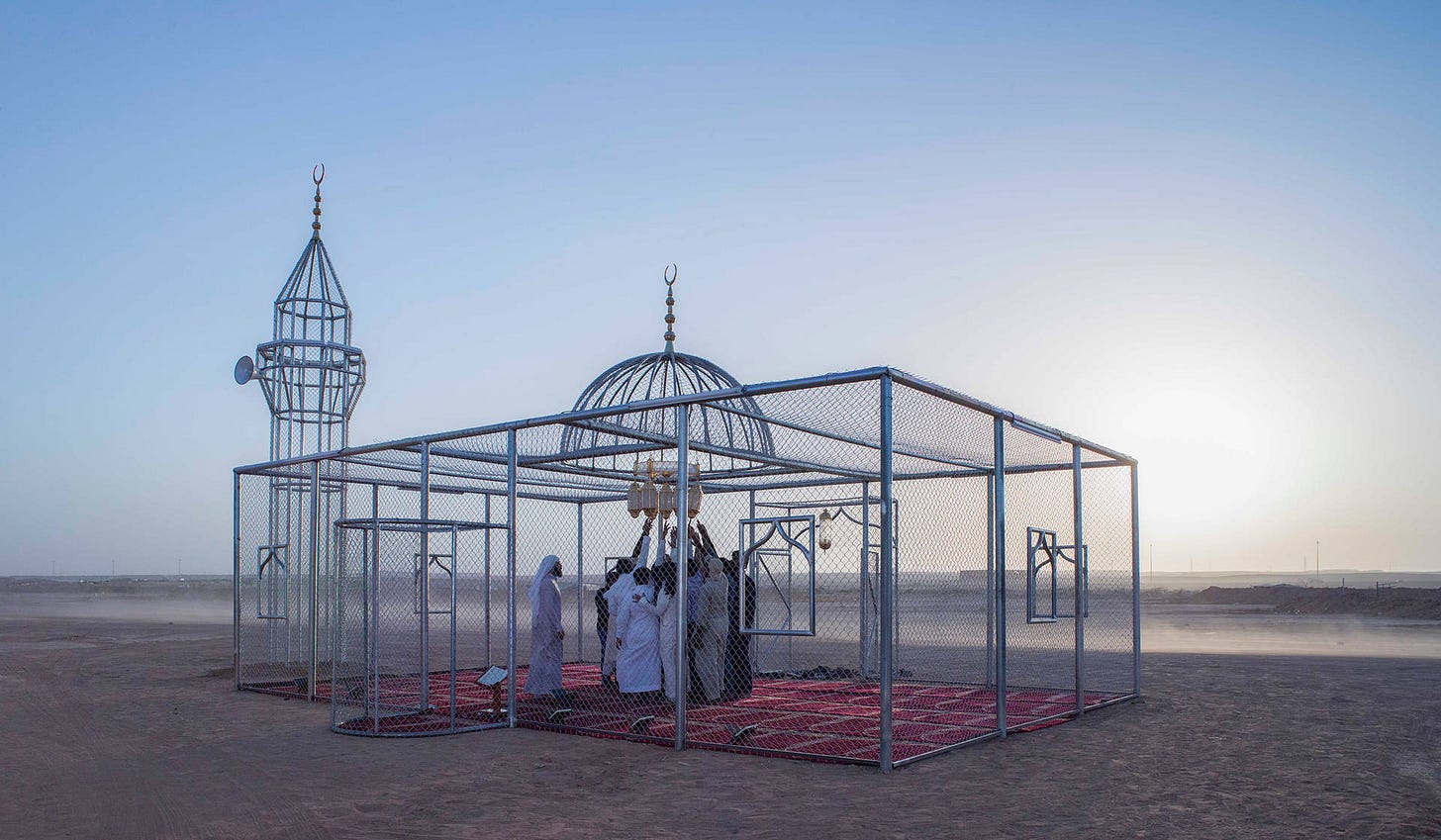Metamodernist Sincerity in Contemporary Islamic Art

At the end of postmodern ironic detachment, the contemporary art world has witnessed a significant shift that embraces sincerity, depth, and spiritual exploration without losing critical awareness. This metamodernist turn is especially evident in contemporary Islamic art, where artists revisit traditional philosophical concepts with renewed earnestness while engaging with contemporary artistic practices and global dialogues.
Cultural theorists Timotheus Vermeulen and Robin van den Akker describe metamodernism in their work "Notes on Metamodernism." This sensibility oscillates between modern enthusiasm and postmodern irony, hope and melancholy, naivety and knowingness. It creates space for spiritual exploration without the defensive irony of much of postmodern art production.
In their work on metamodernism, Vermeulen and van den Akker suggest that metamodernism fluctuates between the modern and postmodern. This oscillation has created fertile ground for artists working with spiritual and religious traditions.
Philosophical Foundations of Contemporary Islamic Art
As recent scholarship has highlighted, traditional Islamic art was deeply rooted in philosophical concepts that gave it both visual distinction and conceptual depth. Three key concepts - light (nur), void, and latency - resonate particularly with contemporary artists working within a metamodernist framework.
In Islamic philosophy, the concept of light or illumination (nur) represents divine presence. Art historian Seyyed Hossein Nasr, in his work "Islamic Art and Spirituality," argues that when Islamic art reached its creative peak, it manifested a powerful intellectual - and therefore spiritual - current from the Islamic tradition. Contemporary artists are returning to this tradition not with postmodern detachment but with sincere engagement.
Similarly, the concepts of void (the philosophy of the invisible and non-existent) and latency (the hidden aspect expressed through geometry) provide rich conceptual material for artists exploring spiritual dimensions in contemporary artistic practice.
Market Recognition of Spiritual Depth
The art market increasingly recognizes the value of works that sincerely engage with spiritual traditions. According to the 2022 Art Basel and UBS "Art Market Report", collectors show growing interest in works that offer contemplative experiences and engage with philosophical depth.
Sultan Sooud Al-Qassemi, founder of the Barjeel Art Foundation, observed in a recent interview with The Art Newspaper that there is renewed interest in works that engage with spiritual heritage without being merely decorative or performative. This represents a significant shift from previous decades when more ironic or politically overt works dominated discussions around Middle Eastern contemporary art.
Leading Artists at the Forefront
Several contemporary artists embody this metamodernist approach to Islamic spiritual concepts:
Shirazeh Houshiary, an Iranian-British artist, has explored Sufi concepts throughout her career. Her work "Breath" (2013) depicts animated calligraphic renderings of Arabic prayers that expand and contract like breathing, directly engaging with spiritual practice. Houshiary's works, such as "Veil" (2004) and the "Breath" series, explore transcendental aspects by focusing on the nearly invisible yet essential act of human breathing as a metaphor for spiritual beings.
Idris Khan, a British-Pakistani artist, layers Islamic philosophical texts to create abstract compositions that invite contemplation. His exhibition "Beginning at the End" (2013) explored Islamic philosophical ideas about creation. Khan's method of layering images of religious texts and stamping them on each other in works like "Every... Page of the Holy Qur'an" (2004) visually conveys Islamic concepts about the multiplicity and ineffability of divine truth.

Monir Shahroudy Farmanfarmaian, an Iranian artist who passed away in 2019, experienced a remarkable late-career market surge. Her mirror mosaic works, such as "Lightning for Neda" (2009), "Convertible Series, Group 8" (2010), and “Third Family” (2011) which combine traditional Islamic geometric patterns with contemporary minimalist aesthetics, have reached prices exceeding $1 million. Her works draw on the traditional Iranian mirror-work technique, transforming it into a contemporary language that reflects light metaphysics and Sufi spirituality.

Rachid Koraichi, an Algerian artist whose works incorporate Sufi symbols and Arabic calligraphy in contemporary installations, has gained increasing institutional recognition. His series "Les Maîtres Invisibles" (The Invisible Masters) and "Le Chemin des roses" (The Path of Roses) explore the spiritual journey of Sufism and the mystical tradition of Islamic wisdom. Koraichi's works have been acquired by the British Museum and the Museum of Modern Art in New York, acknowledging his contribution to developing contemporary Islamic art.

Collector Response
The market response to this sincere engagement with spiritual content has been notable. Hannah McGivern from The Art Newspaper says, "Collectors increasingly value works that offer contemplative experiences. "Collectors increasingly value works that provide more than aesthetic pleasure—they want pieces that evoke or analyze contemplative experiences.
This trend extends beyond Islamic art specifically. Curator Hans Ulrich Obrist noted in a 2023 interview with ArtReview titled "The Return to Spiritual Questions in Contemporary Art" that after decades of cynicism, artists from various cultures are returning to spiritual questions with a new sincerity without losing the critical awareness gained during the postmodern period.
Art historian Nada Shabout, in her essay "Modern Arab Art: Formation of Arab Aesthetics", argues that contemporary artists working with Islamic heritage are no longer caught between Western expectations of exoticism and anti-orientalist reactions. They operate in a more fluid space where spiritual engagement is accepted without predetermined political positioning.
Institutional Recognition and New Horizons of Spirituality
According to Hannah McGivern from The Art Newspaper, in "Collectors increasingly value works that offer contemplative experiences," collectors increasingly value works that provide more than aesthetic pleasure or message - they seek pieces that evoke or analyze contemplative experiences. This trend extends beyond Islamic art specifically. Curator Hans Ulrich Obrist noted in a 2023 interview with ArtReview titled "The Return to Spiritual Questions in Contemporary Art" that after decades of cynicism, we see artists from various cultures returning to spiritual questions with new sincerity without losing the critical awareness gained during the postmodern period.
Art historian Nada Shabout, in her essay "Modern Arab Art: Formation of Arab Aesthetics", argues that contemporary artists working with Islamic heritage are no longer caught between Western expectations of exoticism and anti-orientalist reactions. They operate in a more fluid space where spiritual engagement is accepted without predetermined political positioning.
Major institutions have also taken note of this trend. Recent exhibitions such as "Nur: Light in Art and Science from the Islamic World" at the Dallas Museum of Art and "Geometry and Art in the Modern Middle East" at London's Whitechapel Gallery have explored these themes. The Victoria and Albert Museum's Jameel Prize, an international contemporary art and design award inspired by Islamic tradition, increasingly recognizes artists working with spiritual concepts. The 2021 winner, Ajlan Gharem, created "Paradise Has Many Gates" - a mosque-like structure made of chain-link fencing that reflects both transparency and transcendence - a perfect metaphor for the metamodernist approach to tradition.

Contemporary Islamic art is experiencing not only a transformation in market value but also a fundamental reassessment within the art ecosystem. In the art market, this shift signals a deeper paradigm change - from art as an object of speculation to art as a source of transformative experience. Collectors seeking works with spiritual resonance suggest that art's true value can be measured not only by its financial liquidity but also by its ability to create meaningful connections with viewers, foster contemplation, and enrich inner life.
The metamodernist return of spirituality in Islamic art should not be understood as simple nostalgic idealization of the past, but rather as complex navigation between tradition and innovation, between religious heritage and contemporary realities. Perhaps this integrative vision, which neither rejects nor fetishizes spirituality, may be one of the most distinctive criteria of the metamodernist turn.



